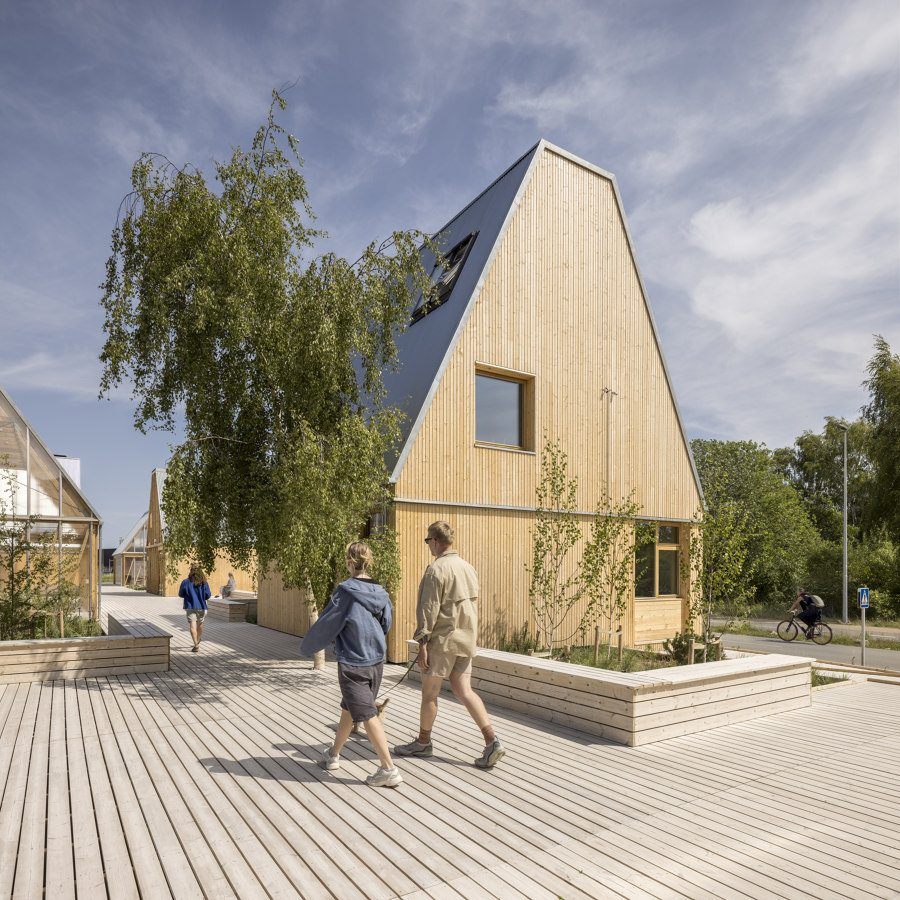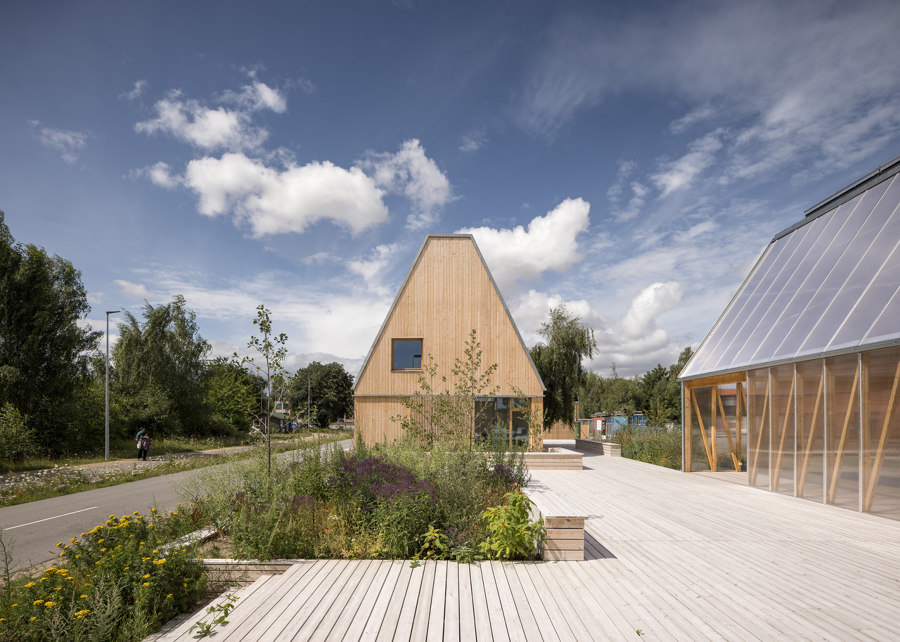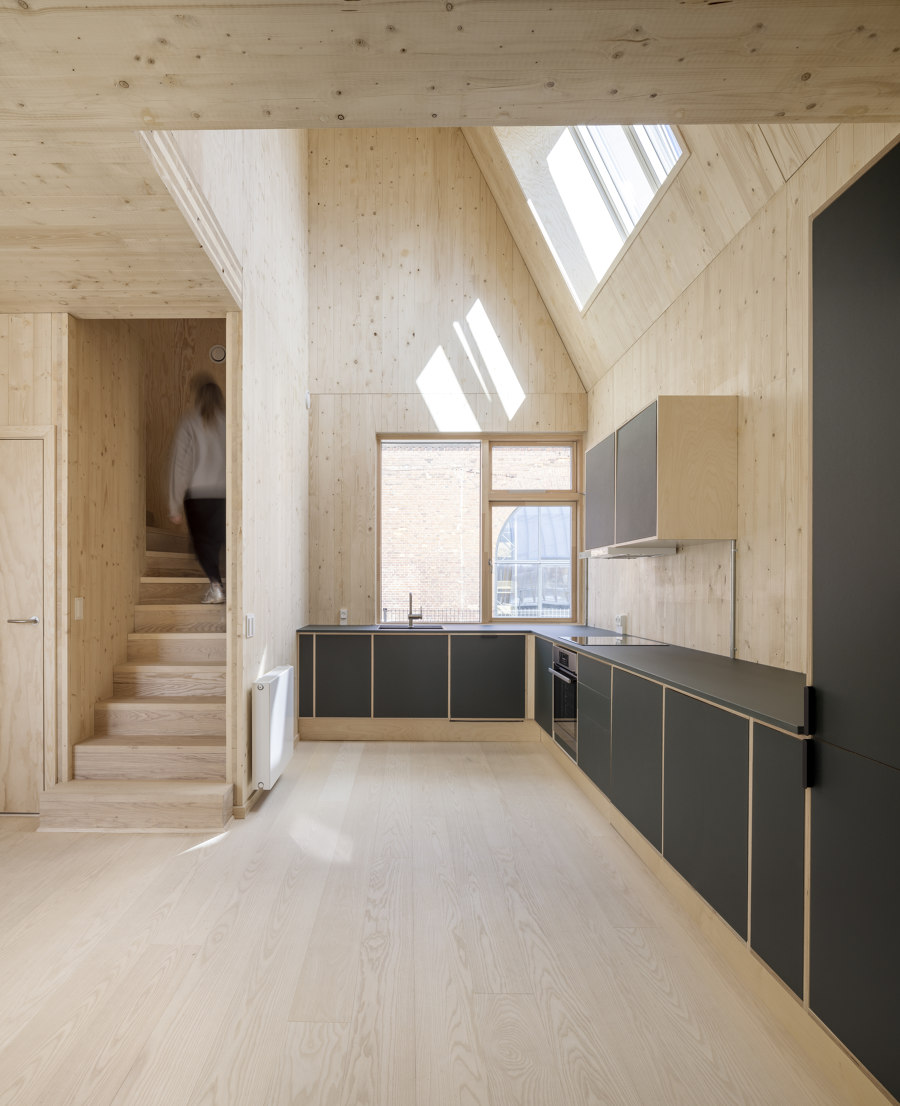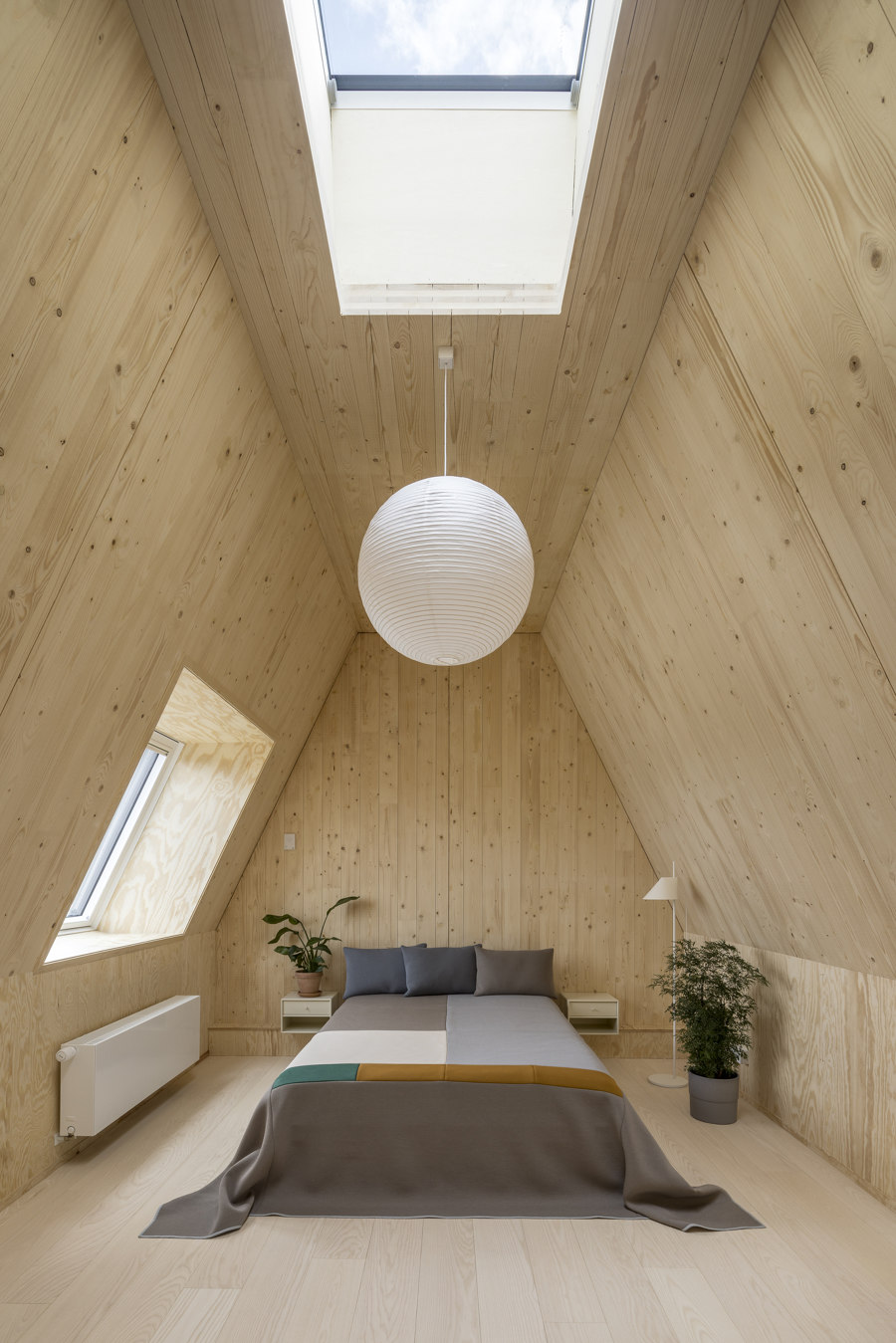Collaborative insights for more sustainable habitat design
Storia del Marchio di Sisse Bro
Hørsholm, Danimarca
25.03.24
On the south side of the city, the experimental building project Living Places Copenhagen stands as a proof of concept. Thanks to the open-mindedness and resoluteness of the partners involved, their common vision was made possible.
The first Living Places prototype was completed in spring 2023 and can still be experienced on site in Copenhagen until the end of September 2024. Photo: Adam Mørk

The first Living Places prototype was completed in spring 2023 and can still be experienced on site in Copenhagen until the end of September 2024. Photo: Adam Mørk
בIf you ask different questions, you will come up with different answers.’ This is how the Founding Partner at Danish architecture studio EFFEKT, Sinus Lynge, sums up the great potential of daring to reflect in unconventional ways. Even though he is talking in the context of modern-day construction and sustainability improvements – complicated matters – the message in his statement is simple: the possibility for change is right in front of us; we just need to be bold enough to act differently.
The Living Places Concept: partnering for people and planet
Back in 2021, a group of like-minded companies within the building industry partnered up to start a discussion. The VELUX Group, EFFEKT architects, Artelia engineers and Enemærke & Petersen as contractors gathered to reflect on the question of how to create better living places. The initiator, VELUX, believed it was about time to rethink how buildings can help resolve global climate and health challenges through sustainable solutions and practical action. Today, about four years later, the partners have sat down again to review their experiment and partnership.
The seven Living Places prototypes present VELUX's proposal for healthy, low-carbon homes and communities. Photo: Adam Mørk

The seven Living Places prototypes present VELUX's proposal for healthy, low-carbon homes and communities. Photo: Adam Mørk
×For the Living Places project, the team employed an approach called Transformative Partnering with all parties involved from the very outset, sharing openly their ideas and reflections. ‘Transformative partnering is this new way of working where we are each given a voice, throughout the whole process. We collaborate towards a goal but I think the most important part of this type of collaboration is that everyone is willing to listen, in the sense that we acknowledge the other one has knowledge that we don’t have ourselves’, explains Head of Innovation at EFFEKT, Kasper Benjamin Reimer.
Showcasing specific design principles, each of the prototypes seeks to inspire architects and developers to build more sustainably. Photo: Adam Mørk

Showcasing specific design principles, each of the prototypes seeks to inspire architects and developers to build more sustainably. Photo: Adam Mørk
×Particular for this collaboration, the participants work in a circular process rather than a linear one, repeatedly involving each other on various challenges and discussing openly without reserve, allowing for fresh and innovative solutions. ‘Over these past years, I’ve been asked what has been the real innovation with this project, and one of the things I always point out is the time that we spent at the beginning, without drawings, just discussing and brainstorming. I think that was the real innovation and something that doesn’t happen normally in the industry’, confirms Ambra Guglietti, Sustainable Buildings Engineer at VELUX Group.
‘We’re able to build with at least two thirds lower CO2 emissions while we still make both healthy and liveable homes that can be socially attractive’
People & planet constitute the backbone of the Living Places concept. Thanks to five fundamental principles, formulated by the group of partners, all aspects of creating sustainable, durable, healthy and scalable housing have been taken into consideration. ‘What we have proven here is that we’re able to build with at least two thirds lower CO2 emissions while we still make both healthy and liveable homes that can be socially attractive. I think that is a huge proof of concept, even though it is still just a prototype’, says Sinus Lynge, underlining the important fact that they succeeded with their goal without inventing anything new. The principal lesson of this project is the realisation that if you first take time to clearly define the targets, it is possible to build both sustainable and affordable housing with existing materials and techniques.
The goal of the spaces is to empower people to research and develop new solutions for building and living. Photos: Adam Mørk

The goal of the spaces is to empower people to research and develop new solutions for building and living. Photos: Adam Mørk
×Sharing a movement
The first Living Places prototype was completed in spring 2023 and can still be experienced on site in Copenhagen until the end of September 2024. The participants hope that sharing the learnings from the project will create a ripple effect, reaching the industry and politicians, leading to more initiatives in the same direction. ‘We’re not just building a house; we’re trying to build an actual movement,’ asserts Lone Feifer, Director of Sustainable Buildings at VELUX Group, aiming to impress other professionals in the field and inspire them to implement this way of developing into their own agencies.
‘We’re not just building a house; we’re trying to build an actual movement’
The findings and experiences from Living Places are made accessible online, as a short documentary where the group of expert participants evaluate their learnings, as an extensive case study and through an immersive virtual tour.
© Architonic
Head to the Architonic Magazine for more insights on the latest products, trends and practices in architecture and design.







